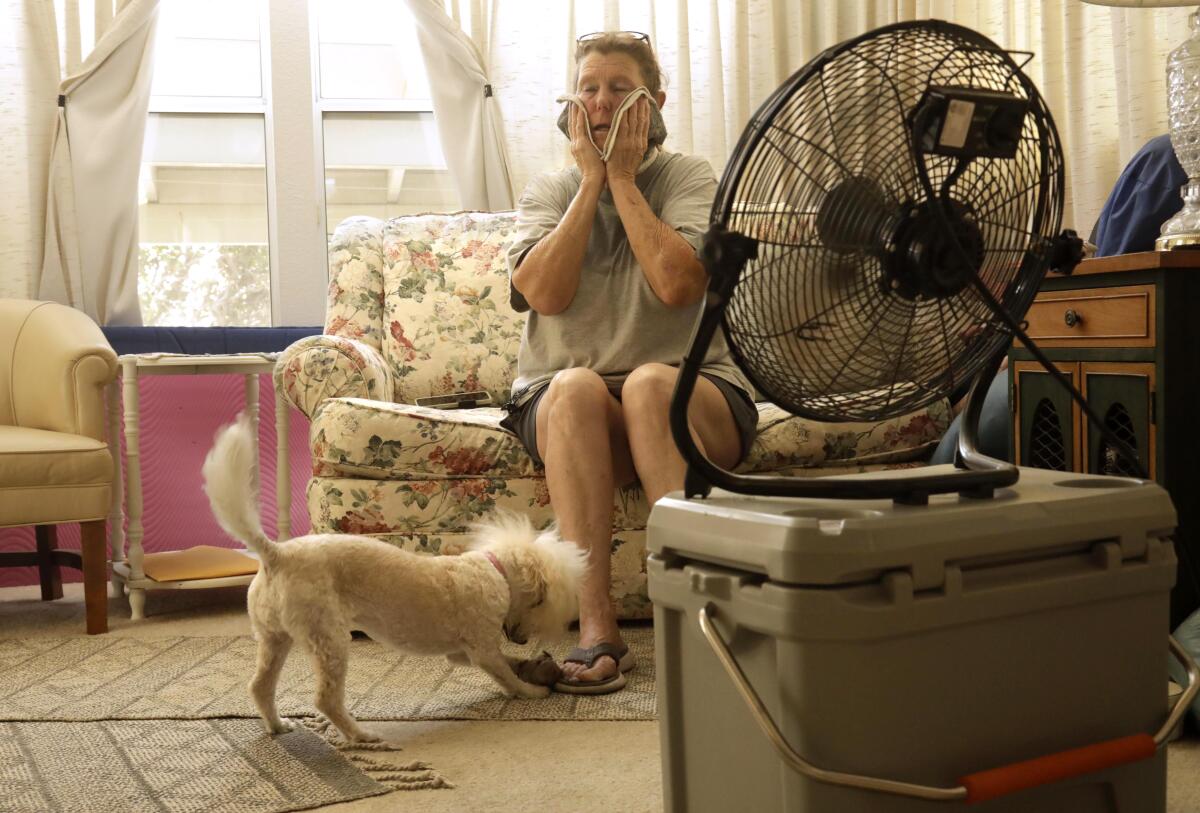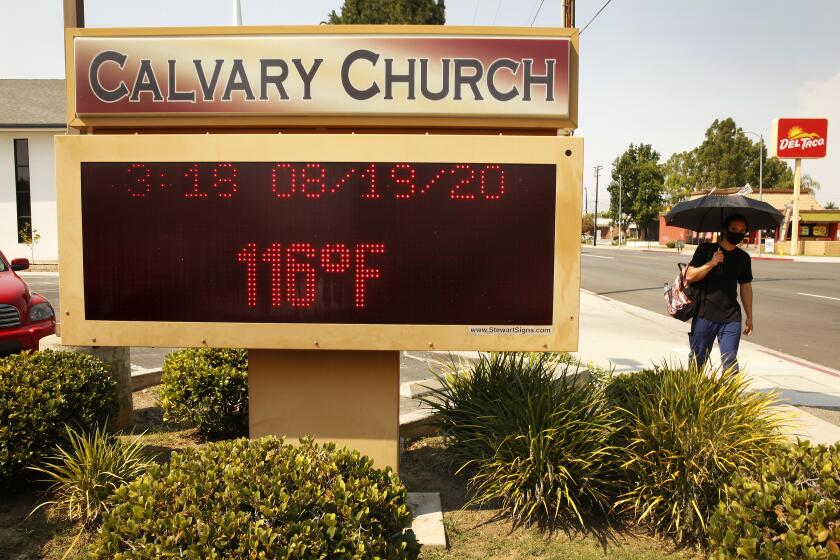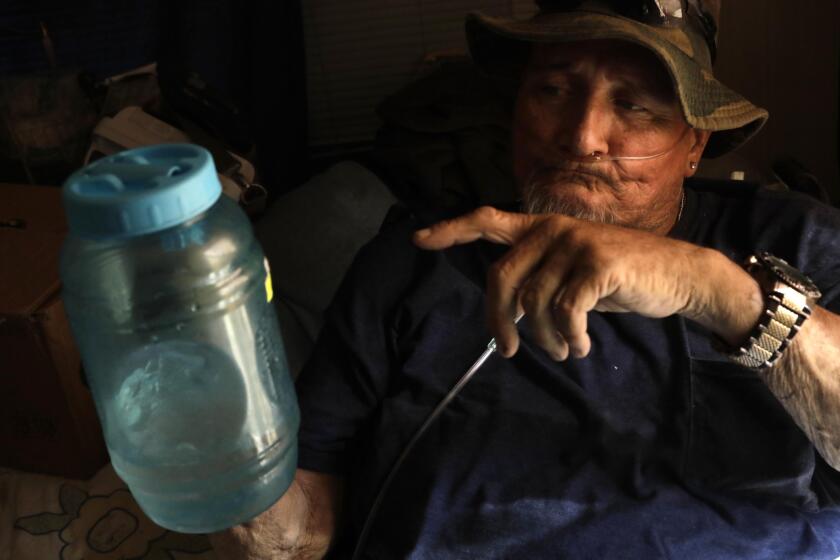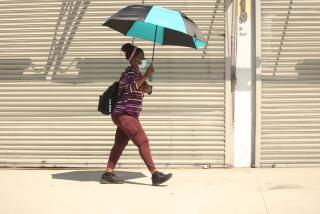Editorial: Climate change is fueling extreme heat. California can do much more to save lives

California may be a leader in fighting climate change, but the state is unprepared for one of the deadliest consequences of global warming — extreme heat.
Heat waves kill more people in the U.S. in an average year than any other weather-related hazard, including hurricanes and tornadoes. Even as extreme heat events have become frequent and intense with the rise in global temperature, heat has been overlooked and underfunded as a climate threat in California compared with wildfires, coastal erosion and other more visible calamities.
Here’s one reason state leaders have failed to treat extreme heat with the urgency warranted: California chronically undercounts the number of people who die as a result of extreme heat, a Times investigation found.
Between 2010 and 2019 — the hottest decade on record — the state attributed 599 deaths to heat exposure. An analysis by The Times, looking at the increase in deaths on the hottest days compared to normal conditions, found the death toll was likely six times higher than the official tally. The Times estimated extreme heat caused 3,900 deaths over the same period.
California’s climate resilience budget includes little money to prepare for extreme heat.
That undercount masks the true impact of extreme heat and makes it harder for advocates who see and understand the threat to push state and local leaders to increase the funding and attention needed to make vulnerable communities safer during heat waves.
The lack of data also leaves public health officials and researchers without crucial information that could help prevent more suffering and death. Who is dying from heat exposure, and where and how are they dying? How can communities help reduce the risk of heat illness without accurate, timely data to understand who is at risk and why?
This is not just a California problem. Across the U.S., heat-related fatalities are typically undercounted. Heat is a silent killer. It exacerbates underlying health conditions, and so heat-related deaths are often recorded as heart failure, stroke or respiratory failure.
Climate change is fueling more frequent heat waves, and it’s only going to get worse as the world keeps pumping out greenhouse gas emissions. California is particularly at risk. The number of days per year when the temperature rises above 95 degrees in Los Angeles County, for example, could double, triple or even quadruple by 2050, according to projections. And the death toll will likely rise with the temperatures. Los Angeles, Orange, Riverside and Imperial counties are among the top 2% of counties nationally for projected increases in heat-related deaths.
It’s clear that extreme heat is a public health hazard, and California needs to move faster and with more focus to save lives. That starts with compiling an accurate count of heat-related deaths. The state needs to build a surveillance system to track when and where heat-related deaths and emergency room visits are occurring in real time — not months or years after the event. Having that information at hand before or during a heat wave could allow public health officials to get information and assistance to vulnerable populations.
Read all of our coverage about how California is neglecting the climate threat posed by extreme heat.
Targeted outreach is essential because extreme heat is not an equal-opportunity threat. It poses the gravest risk to the poor, the elderly and the infirm. These are individuals who don’t have or cannot afford air conditioning, cannot easily leave their homes to go to a cooling center, or whose jobs require them to work outside. Low-income urban neighborhoods are also at risk because they tend to have older housing without air conditioning, and their neighborhoods lack trees and parks, creating a “heat island” effect that traps heat and stays hotter longer, often into the night.
The state also needs a comprehensive strategy to make communities more heat-resistant. Los Angeles has experimented with using light-colored “cool” pavement and roofs to reduce the heat island effect, and there are plans to install more bus shelters and other shade structures. There are efforts to plant more trees, create parks and replace some pavement with landscaping. But these are patchwork programs that are not nearly enough to make an impact yet. California will need a lot more direction and funding for the kind of larger urban transformation that will actually cool communities.
California is only getting hotter. We know the threat posed by extreme heat, and we know that these deaths are preventable.
More to Read
Toward a more sustainable California
Get Boiling Point, our newsletter exploring climate change, energy and the environment, and become part of the conversation — and the solution.
You may occasionally receive promotional content from the Los Angeles Times.












